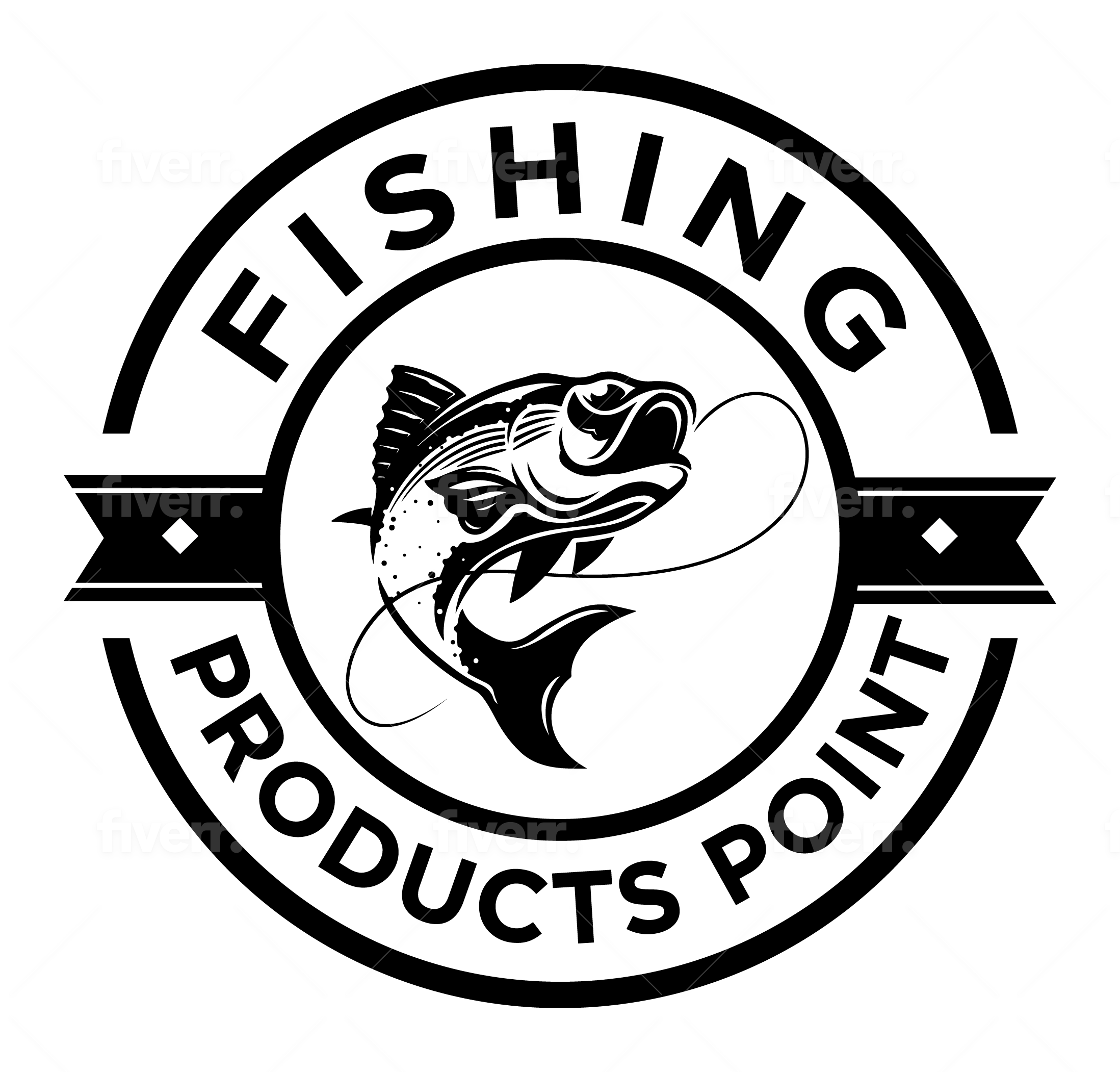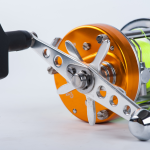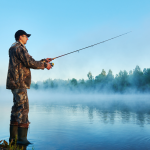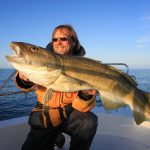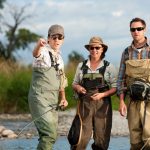Are you a fishing enthusiast looking to up your fishing game? Maybe you are a newbie seeking a new pastime in the great outdoors. Then surely, the one thing that you will want to learn is how to fly fishing. It will unlock the secrets of the angler’s paradise and soar to new heights.
Fly fishing is an exciting sport that involves catching fish with hand-tied flies instead of using live bait. If you are new to fly fishing, it could appear scary and overpowering. But fear not, I have put together this ultimate guide to help you get started.
In this blog post, I will be discussing the ins and outs of how to fly fish, including tips, tricks, and techniques to help you reel in those big catches. So gather your supplies and prepare for an exciting journey into the world of fly fishing!
How is Fly Fishing Different from Traditional Fishing?
Fly fishing is a unique angling method that involves casting a lightweight artificial Fly utilizing a specific fly rod, reel, and line. Unlike traditional fishing, where the lure or bait’s weight is used to cast, fly fishing depends on the fly line’s weight.
This technique allows anglers to present the fly delicately on the water’s surface, imitating the movements of insects or other aquatic creatures.

Fly Fishing for Beginners
How to fly fishing for beginners can be seemed difficult at first, because there are a variety of things in fly fishing that are very different from regular fishing. This includes the equipment, casting techniques, and methods of catching fish.
However, regardless of that, fly fishing is an incredibly rewarding and enjoyable activity that anyone can learn – regardless of age or experience. By doing the practice of all the techniques involved in fly fishing, you can become a master of this style of fishing. It can become a lifetime experience, especially for beginners.
Fly Fishing Equipment
Before diving into the process of how to start fly fishing, it is essential to familiarize yourself with the necessary fly fishing gear. This includes:
- Fly rods
- Reels
- Fly lines
- Leaders
- Flies
Each component plays a crucial role in the overall performance and success of your fly-fishing endeavors.
Steps of How to Fly Fishing?
Fly fishing is certainly not a skill that you can learn and become a pro in one day. However, you can get yourself started in learning the art of catching fish with a fly by following these steps.
Step 1: Choose the Right Equipment
Selecting the right fly fishing gear can be overwhelming, especially for beginners. There are key factors to consider when choosing fly rods, reels, lines, leaders, and flies that suit your fishing style, target species, and local conditions.
Fly Rods and Reels
Fly rods and reels are available in a variety of sizes, compositions, and styles. But as a beginner, it is best to choose a medium-action rod that is around 9 feet long. It will give you the best balance of accuracy and casting distance.
As for fly reels, you should opt for a metal fly reel, as it cannot be broken and able to last long. On the other hand, plastic reels though inexpensive can easily be broken and are not good at delivering consistent results.
As an angler, to perform properly and consistently in fly fishing, keep in mind that the rod’s weight and reel’s weight should be the same.
Understanding the different features and their impact on casting, line control, and fighting fish will help you make an informed decision when investing in your first fly rod and reel.
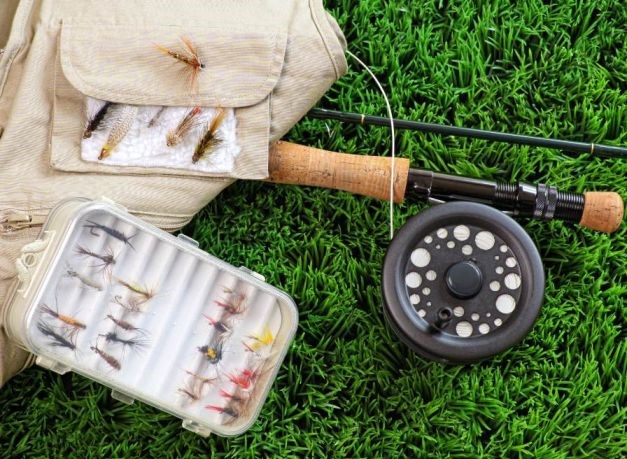
Fly Lines and Leaders
Fly lines and leaders are essential components of the fly fishing setup. They facilitate accurate casting, control the fly’s presentation, and provide the necessary strength and invisibility to fool wary fish. Choosing the right fly line weight, taper, and leader material is crucial for optimal performance.
Flies and Fly Boxes
Flies are imitation insects or baitfish used to entice fish to strike. Different fly patterns mimic various aquatic insects or other prey items.
In fly fishing, typically, there are three sorts of flies.
- Dry flies
- Wet flies
- Nymphs
Dry flies as the name suggests, are intended to float on the surface of the water and imitate adult insects that have landed on the water.
Wet flies are made to submerge below the surface and imitate insects that are below the water’s surface.
Nymphs are also intended to sink and imitate immature insects that are still developing in the water.
Each type of fly has its unique characteristics that can help you land that perfect catch.
Step 2: Learn How to Cast
To become a proficient fly angler, mastering fundamental fly fishing techniques is vital. The three main fly fishing methods are as follows.
- Casting
- Reading the water
- Presenting the fly
1. Casting
Once you have your equipment ready, it is time to learn how to cast fly fishing. Casting is the foundation of fly fishing. It is the most crucial ability to possess as an angler if you want to catch a big fish. Although there are other casting methods available, the most popular is the overhead cast.
To perform an overhead cast in fly fishing, follow these steps:
- Put your thumb on the handle’s top, and use your dominant hand to grip the fly rod. By resting the handle between your palm and fingers, hold it against the inside of your hand. Your other hand will control the line.
- Establish a basic casting position by standing with your feet facing the target. By extending your arm, hold the rod in front of you. Also, make sure that the tip of the rod is above the water’s surface.
- Start the backcast by slowly lifting the rod tip back, allowing the fly line to slide through your non-dominant hand. As you lift, the line will start to straighten out behind you.
- Once the line is fully extended behind you, accelerate the backward motion of the rod tip and stop abruptly, causing the rod to flex or “load.” This loading of the rod stores energy for the forward cast.
- As the rod starts to unload and straighten up from the backward motion, smoothly accelerate the rod tip forward and perform the forward cast. Keep in mind that the rod should be stopped quickly when it reaches a slightly inclined position in front of you.
- As the rod is stopped, with your non-dominant hand slowly release the tension. The line can proceed as a result. Until the line spreads completely, keep it moving forward in the target direction with your arm follow-through.
- To maintain the line in the air and control its direction, in a continuous motion repeat the backcast and forward cast.
Remember that mastering the overhead cast takes practice and patience. It can be helpful to take lessons from a qualified instructor or watch instructional videos to refine your technique.
2. Reading the Water
Understanding how to read the water is essential for locating fish and determining where they are likely to feed. Every fly angler should develop this skill.
This technique involves observing various features and characteristics of the water to determine where fish are likely to be and how they might respond to different fishing strategies. By honing this skill, anglers can greatly increase their chances of success on the water.
3. Presenting the Fly
Presenting the fly is another fundamental skill that can significantly increase your likelihood of landing a fish. In simple words, presenting the fly is to catch a fly. In this technique, naturally and temptingly presenting the fly to the fish, mimicking the behavior of their natural prey.
Here are several actions to give the fly:
1. Begin by selecting a size 18 dry fly and attaching it to your leader.
2. Approach the water and look for rising fish.
3. Aim for the area where fish are rising and make a gentle cast.
4. Let the fly sit for a few moments and then begin to slowly twitch the fly.
5. Continue twitching the fly and allowing it to drift with the current.
6. If a fish takes the fly, gently set the hook and begin fighting the fish.
Remember to release the fish gently back into the water once caught.
Step 3: Tie on a Fly
After you have mastered casting, it is time to tie on a fly.

Fly Tying Knots
Here are some frequently used fly fishing knots:
Clinch Knot: This knot is commonly used to attach the fly to the tippet or leader.
Surgeon’s Knot: This knot is used to join two pieces of tippet material or to connect the leader to the fly line.
Nail Knot: This knot is commonly used to secure the fly line to the backing. You can use a nail or a tube as a tool to tie this knot.
Blood Knot: This knot is used to join two lines of similar diameters, such as connecting two pieces of leader material.
Although there are many various kinds of flies you can use to tie a knot, it is preferable to start with a dry fly as a novice. This fly floats on the water’s surface and imitates an insect.
To tie on a fly, attach the fly line to the leader using a connection between loops. Then, tie the fly onto the leader using a clinch knot.
Step 4: Find a Good Spot
Now that you are ready to fish, time to select a suitable location. Look for areas of the stream or river where there is a cover for the fish and the water is moving gently. This can be near rocks, under logs, or in the shade of trees.
Step 5: Cast and Catch
Cast and catch is the next step once you have located a decent location. Make sure to cast your fly upstream and let it drift naturally down towards you. As soon as you notice a fish rising to accept your fly, gently lift your rod to place the hook. Then, reel in your line while keeping tension on the fish. Congratulations, you have caught your first fish with a fly!

Conclusion
Fly fishing is not just a hobby; it is an art form that allows us to connect with nature and experience a sense of tranquility like no other. With time, practice, and a sincere love for the intricate dance between angler, fly, and fish, anyone can master the art of fly fishing.
With these five important steps, you now know the basics of how to fly fishing. So, grab your rod, tie on a fly, and let the serenity of the water guide you on a journey of discovery. Whether you are a seasoned angler or a beginner seeking a new adventure, fly fishing promises to captivate your senses and create lasting memories. Good luck!
